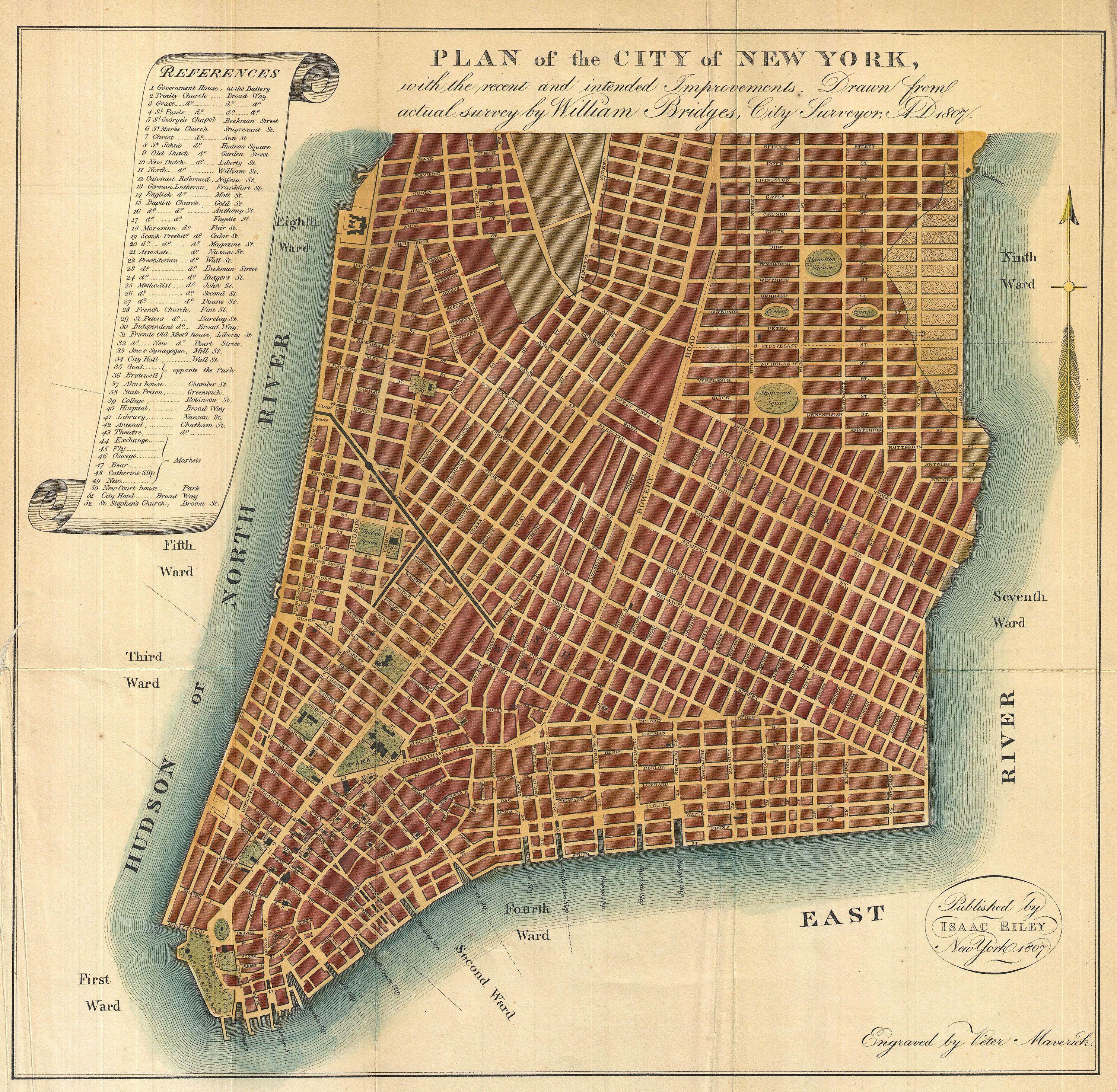
The design echoes myriad earlier grids stretching back to the ancient world – for Thomas Jefferson, it revived “ the old Babylon” – but perhaps the closest inspiration was Richard Newcourt’s bold design for rebuilding London in 1666, with its central square at the intersection of axial streets, surrounded by four satellite squares. This is the design idea set out in Holme’s Portraiture, and which continues to define Center City, Philadelphia today. By extending the grid to connect the riverbanks, they created a 480-hectare (1,200-acre) city with two waterfronts, maximising its commercial potential as well as access to drinking water. The pair agreed the location could hardly be bettered for the health of business and bodies alike. When he arrived in America in autumn 1682, Penn found Holme, his surveyor general, staking out the city’s first streets on a neck of land between the Delaware and Schuylkill rivers.

It was, in his own words, “a green country town”.

Penn’s imagined city was not really a city at all. With that aim, the streets were to be “uniform down to the water”, and each house would ideally be placed in the middle of its plot, “so there may be ground on each side for gardens or orchards or fields”. Troubled by the memory of fire and plague in London during the 1660s, and their frequent devastation of colonial ports, Penn wished his capital would “never be burnt, and always be wholesome”. The first purchasers were enticed with a property lot in each of three zones: country, city, and its surrounding liberties. In a vast forest clearing along the Delaware river, Penn planned a great port city connected to the country by 17th-century superhighways uniting commercial and landed interests. Trees, John Evelyn had stressed in his 1664 bestseller Sylva, were the prime source of England’s national and imperial strength. More attractive than accurate, the map is decorated with trees – almost an alphabet from ash to walnut – which served not merely to justify the name of Pennsylvania (meaning Penn’s woods), but to suggest the land’s great fertility and commercial viability, including an abundance of timber fit for building. Illustration: John Carter Brown Library at Brown University

Map of the ‘partly inhabited’ south and east bounds of Pennsylvania (1681). Those who “partly inhabited” the territory included Swedes, Dutch and English as well as indigenous peoples, though the map’s depiction of “Sesquahana fort Demolished” seems calculated to give the impression that the land sold to new buyers would be, as Penn claimed, “free from any Indian encumbrance”. To encourage investors, Penn commissioned a map of “ Some of the South and East bounds of Pennsylvania in America, being Partly Inhabited”. “Though I desire to extend religious freedom, yet I want some recompense for my trouble.” The “holy experiment” he had envisaged was giving way to hard-headed real estate development. “I cannot make money without special concessions,” Penn wrote after a few months of intense meetings with prospective buyers. Yet the province nonetheless constituted his personal estate, and the planning process merged religious and political considerations with economic pressures. The constitution and laws Penn devised owed much to Magna Carta, the first American printing of which would appear in Philadelphia in 1687. Penn wished that his new capital would 'never be burnt, and always be wholesome' The first cargo of enslaved Africans sold fast to his settlers on its arrival in 1684.

His promised land guaranteed freedoms, rights and liberties – for white Europeans at least.
City street grid series#
Within a month, he published the first in a series of promotional tracts with the aim of generating investor interest in his plan to “settle a free, just and industrious colony”. As a feudal-style proprietor, Penn could in turn grant out land as he saw fit. In March 1681, a cash-strapped Charles II, unable to repay a debt owed to Penn’s late father Adm Sir William Penn, instead made the young heir sole owner of 45,000 square miles of land south-west of New Jersey and north of Baltimore – the king assuming, in a god-like fashion typical of British imperial monarchs, that the territory was his to give. A Portraiture of the City of Philadelphia (1683), by Thomas Holme.


 0 kommentar(er)
0 kommentar(er)
